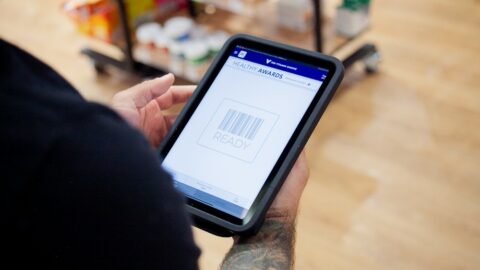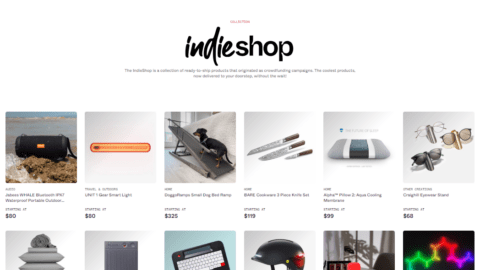As the holidays get closer, retailers know they must execute their plans flawlessly throughout all channels if they hope to reach their internal goals and meet high customer expectations.
To gain insights on how to optimize planning and execution going forward, more than 1,100 registrants attended the Retail TouchPoints Retail Strategy & Planning Series from Sept. 21-25, 2015. #RSPS15 included nine webinars that shared tactical tips, insights, metrics and trend data necessary for retailers as they build out their strategies for 2016.
Presenters from companies such as StubHub, Forrester, Cisco and RetailNext offered their perspectives and real world examples to reinforce the strategies they have deployed through both e-Commerce sites and stores. Topics discussed include:
-
Which in-store mobility strategies succeed and fail, and why;
-
How to use analytics to improve the modern shopping journey;
-
How to drive new consumers through referral marketing; and
-
The metrics to help forecast revenue, retention goals and the overall success of technology investments.
IMPROVING THE E-COMMERCE EXPERIENCE:
Preventing Online Shopping Cart Abandonment
During the holiday season, retailers need to optimize their online shopping carts so consumers will be more likely to complete their purchases. In a webinar, titled: Revenue Rescue: Saving Sales When Shoppers Stray, Jim Davidson, Head of Research at Bronto Software, provided insight into how retailers can streamline their checkout processes.
The average retail web site has 5.45 pages between the shopping cart and order confirmation, according to Bronto research. Davidson advises retailers to simplify these pages by working with their e-Commerce providers and stepping through their own checkout procedures just as if they were a customer.
The good news when it comes to cart abandonment is that more retailers are sending cart reminders in 2015. In fact, 41% have sent at least one cart reminder email this year, more than tripling the 13% total in 2013.
“Don’t fear product and cart reminders,” Davidson said. “They’ve become a lot easier to manage. You get a lot of control as far as testing and optimizing the content.”
Keeping E-Commerce Customers Top Of Mind
Although in the past customers gained information on potential purchases primarily from the brand, e-Commerce channels provide shoppers with access to a wealth of information to help them in their shopping needs. This means the brand is no longer the product authority; it is now just one piece of the information pie. For retailers, this means that the brand experience they work hard to cultivate is no longer completely under their control. However, retailers still can provide value to their customers and enhance the shopping experience.
The first step is to understand how the customer funnel has changed. “We’ve seen some dramatic shifts in terms of the way consumers are navigating through the traditional idea of the purchasing funnel,” said Mike Hay, Senior Director of Strategic Marketing Intelligence at ROI•DNA. “A number of things have happened over the past couple of years that have changed the dynamic of the funnel. Customers are now traveling down a much more complex path.”
The best e-Commerce sites combine analytics with design to provide an exceptional shopping experience that addresses the parameters of these new funnels. During the session, titled: Creating A Customer-Centric Web Site, thought leaders from ROI•DNA and Symantec discussed ways retailers can design e-Commerce sites that are optimized for the customer experience.
StubHub Defends Itself Against Malicious Online Bots
There is a growing “bot problem” impacting e-Commerce businesses today. These “bots” are automated web scrapers that exist solely to scrape online prices, gather product data and monitor inventory and customer behavior. Often, competing retailers are the ones deploying the bots to gain an advantage through data collection. Additionally, hackers can use bots for various forms of fraud and theft.
As much as 60% of e-Commerce traffic can actually be attributed to these “bad bots,” according to Rami Essaid, CEO and Co-Founder of Distil Networks.
During the session titled: StubHub’s Field Guide To Preventing Competitor Price Scraping, Unwanted Transactions, Brute Force Attacks, And Click Fraud, Marty Boos, Senior Director of Technology Operations at StubHub, explained how the retailer experienced similar challenges in trying to fend off these malicious scrapers before turning to Distil Networks to assist them in alleviating the problem. With the solution, StubHub has reduced competitive data mining, increased SEO rankings and cut page views in half without impacting its human users. This gave the StubHub team a more accurate sense of how many visitors are entering its site.
Drive New Consumers Via Referral Marketing
Referral marketing programs are a great way for a brand to not only acquire new customers but also to reward existing customers. “The best referral programs are the ones that drive the most revenue and reward both the friend and the advocate when the friend purchases or converts,” said Jen Gray,Director of Marketing at Extole.
During the webinar, titled: Build Referrals for Holiday Season And Beyond, Gray highlighted a referral program use case from e-Commerce retailer Kipling-usa.com. The retailer gave Gray the option to refer the web site to a friend after she purchased a tote bag off the site, offering a $15 discount on her next purchase of $75 or more. To implement this program, Kipling uses an API from Extole that enables promotion, sharing, tracking and reporting functions.
Yvahn Martin, Sr. Manager of Digital Marketing at Kipling-usa.com, shared her thoughts on several practices the retailer has used to bolster the program, including:
-
Adding an overlay call-to-action on the site;
-
Adding promotions in transactional emails;
-
Adding product sharing; and
-
Turning its best advocates into “super advocates” for better offers.
Boost Performance By Applying Product Intelligence
Although nearly all retailers have already planned their assortment for the 2015 holiday season, they still need to sell it. The session, titled: Leverage Product Intelligence To Improve Category Performance This Holiday Season, explored the motivating factors that contribute to a shopper’s purchase and how retailers can apply this knowledge to lift category performance.
For example, while e-Commerce provides customers with many options and opportunities, it also can create shopper stress. Retailers could boost sales by simply making it easier for customers to find the products they are seeking.
“There are opportunities to reduce shoppers’ stress and uncertainty by guiding them a bit more,” said Sucharita Mulpuru, VP and Principal Analyst at Forrester Research. “It’s more than just offering every single SKU of a particular item, but also guiding them toward better items that could solve pertinent needs that they have.”
BOLSTERING THE STORE FOR 2016:
Using Data To Build A Better Customer Experience
Although analytics are not limited to e-Commerce channels, many retailers find it more difficult to collect, measure and analyze in-store shopper behaviors. The truth is that today’s retail landscape provides unprecedented opportunities to detect, connect and engage customers in the store. By applying in-store metrics such as traffic data, retailers can improve store operations and boost sales, creating an overall positive impact on the in-store experience.
“The retail store you know today will be transformed,” said Keith Swenson, VP of Research and Development at Fujitsu North America, during the session titled: Use In-Store Location Data To Create A Better Customer Experience And More Sales. “Analytics used to be mostly manual and periodic. Instead, imagine that your business analytics was always on and immediately available with the information you need…Shopping, then, in the coming decade could be transformed into something we barely recognize today.”
Why 60% Of Retailers Still Don’t Use Mobile
While mobile technology continues to grow in both capabilities and usage, retailers are still lagging behind when it comes to adoption. In fact, a Retail TouchPoints survey indicates that 60% of retailers still aren’t using mobile as part of their strategies.
During the session, titled: Mobile In the Workplace: What Are You So Afraid Of?, David Schrader, Director of Product Development at Empower Software Solutions, dove into some common reasons why retailers still hesitate to use mobile.
Associates being (or even seeming to be) distracted while on the job is the number one fear retailers have in implementing mobile campaigns. Additional fears included device damage, data security and legal concerns.
For the 40% of retailers that are using mobile, their biggest reasons for implementing these solutions are the ability of associates to see product pricing and information, and to have access to coupons and promotions a consumer may expect to be validated.
While there continue to be industrywide concerns, 65% of retail employees do believe they could better service customers if they were mobile-empowered, according to Schrader.
Using Analytics To Guide The Shopper Journey
The shopper journey is complex. By identifying its stages, retailers can address shopper needs specific to their location on the purchasing path. During the session, titled: Optimizing The Shopper Journey: Best Practices For In-Store Analytics, Tom Martell, Director of Advanced Analytics at RetailNext, broke the shopper journey down into four manageable stages:
-
Outside the store;
-
At the door;
-
Inside the store; and
-
Post-visit engagement.
By interacting with potential customers and guiding them through the shopping journey, retailers can directly address shopper needs and win sales and loyalty. Advanced analytics provides the key to unlock the value of this information.
“To compete today, retailers have their work cut out for them in order to best understand as many touchpoints as possible,” said Martell. “We believe that for retailers to stay competitive in today’s market place, a comprehensive focus on in-store analytics that touches every store in some way is critical.”
Connect Store Assets To Gain Unique Insights
A holistic approach to store assets provides retailers with opportunities to collect and act upon valuable insights. The Internet of Everything (IoE) will serve as the catalyst to combine these assets and collect actionable data that retailers can use to boost operational efficiencies. For example, using cameras to measure traffic in specific areas of the store could provide indicators as to when the shopper plans to check out.
During the final #RSPS15 session, titled: Why You Need Sensor Fusion In Your 2016 Retail Analytics Strategy, Shaun Kirby, CTO, Cisco Consulting Services discussed how advances in indoor location technologies, video analytics and sensor fusion can disrupt the current retail landscape.
“The business value of these accelerated trends is staggering,” said Kirby. “Over $19 trillion is expected to add to net present value over the next ten years. While much of the emphasis to date has been on the value of connecting things, we believe the full potential will come from three elements: Data, process and people.”













